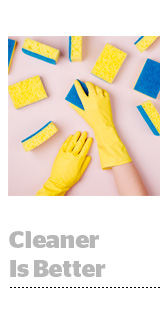
The Trustworthy Accountability Group (TAG) released a study on Thursday that found an 84% drop in fraud compared to the industry average when all members in the supply chain are vigilant, badged and on the level.
TAG analyzed 75 billion display and video impressions across desktop, mobile web and in-app channels to look for sophisticated invalid traffic. The campaign traffic data was submitted by Omnicom’s Annalect, GroupM, Horizon Media, IPG Mediabrands and Publicis Media.
“We tell our clients, ‘If you’re running in an ad network, you’re basically allowing someone to buy programmatically on your behalf and you don’t know if that person has your own best interests at heart,” said Joe Barone, GroupM’s managing partner for brand safety in the Americas, speaking Thursday at an event in New York City hosted by 614 Group, which partnered with TAG on its research.
Although it’s encouraging to see a decrease in fraud, particularly since the study included mobile, where it has been a persistent issue, only 109 companies are TAG certified. That’s double where TAG was around this time last year, yet still only a sliver of the ecosystem.
But with big buyers like Procter & Gamble now requiring its partners to get anti-fraud TAG certification, participation is on the rise.
GroupM’s biggest clients, which include P&G and Unilever, are “demanding that type of transparency,” Barone said.
A few years ago, when GroupM started its brand safety practices, it wasn’t uncommon for stressed-out clients to demand what Barone called “don’t-tell-me meetings,” during which they’d say things like, “Don’t tell me half of my ads aren’t being seen by humans” or “Don’t tell me there are more bots than humans clicking on my ads.”
But brands are getting more realistic about what to expect.
“We don’t have those meetings anymore,” Barone said.
And agencies are starting to be more open with each other, since it doesn’t make sense for them to hold their brand safety- and fraud-related insights close to the vest.
In April, the 4As created an industry consortium of holding companies and agencies called the Advertiser Protection Bureau to help members share their experiences and crack down on problems more quickly.
“The most important thing we’ve done is agree to work together,” Barone said. “We realized that very rarely do any of us win a pitch against another based on our ability to serve ads or apply DoubleVerify tags.”
It’s also about helping participating agencies walk the walk.
“We need to be faster,” Barone said. “Think about the pressure we put on Google or Facebook to take down bad content quickly. We need to be as quick as we can to notify clients of risk.”
This post was syndicated from Ad Exchanger.


More Stories
Val Morgan Cinema and Kantar confirm Cinema’s strong impact in engaging youth audiences
Unbound Hamilton earns 2025 Google Premier Partner status again
Putting ecostore’s science to the test